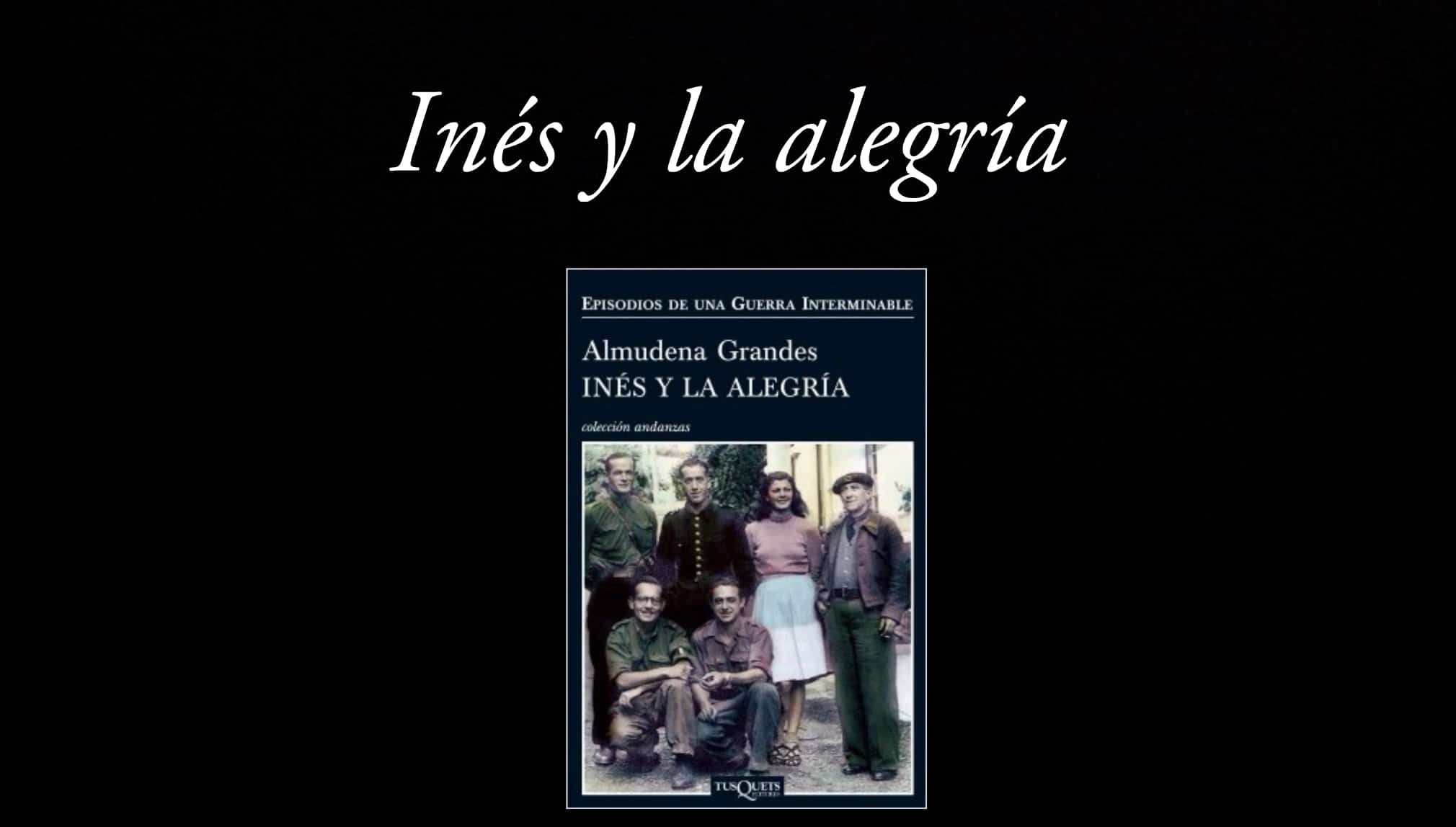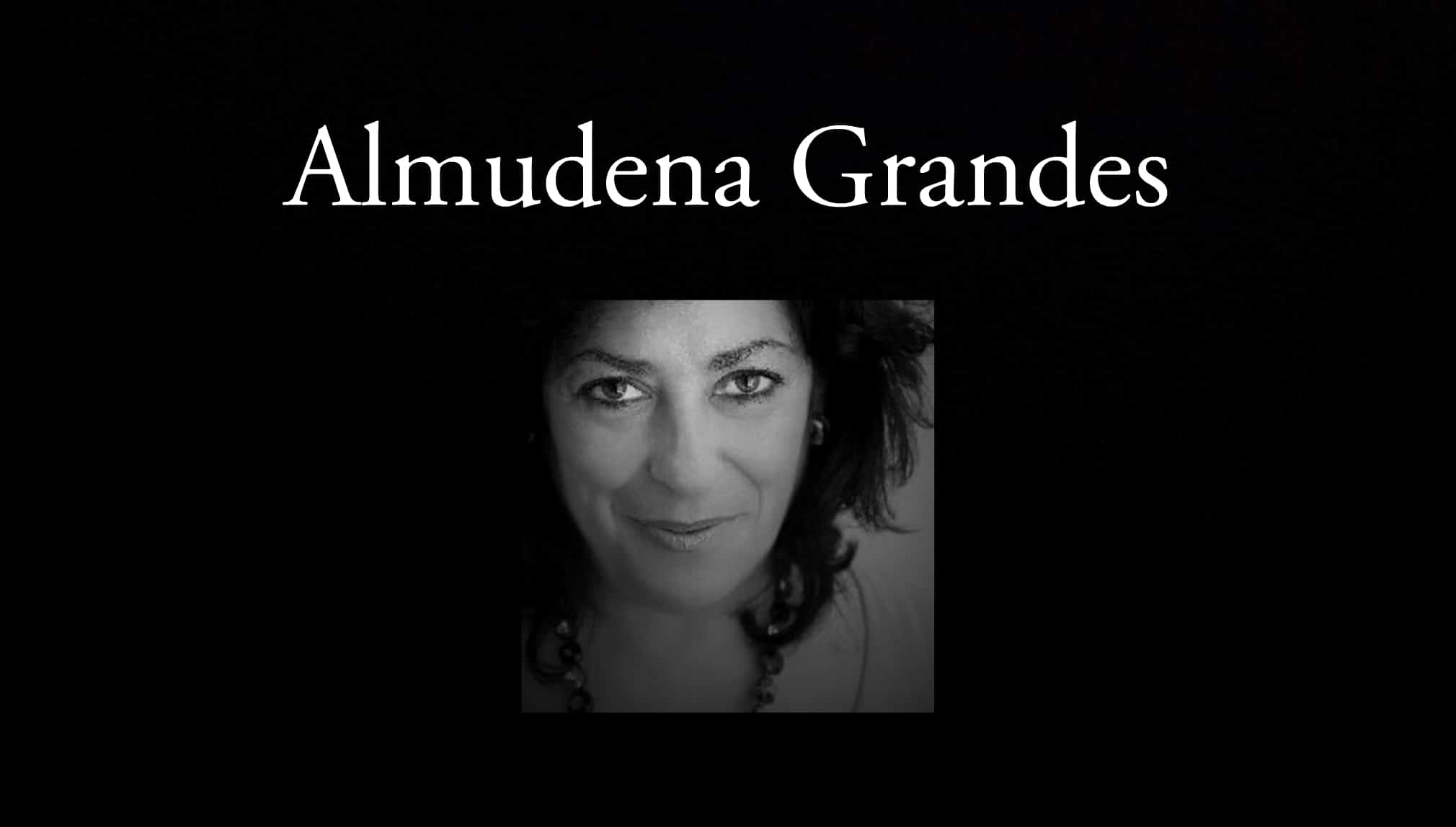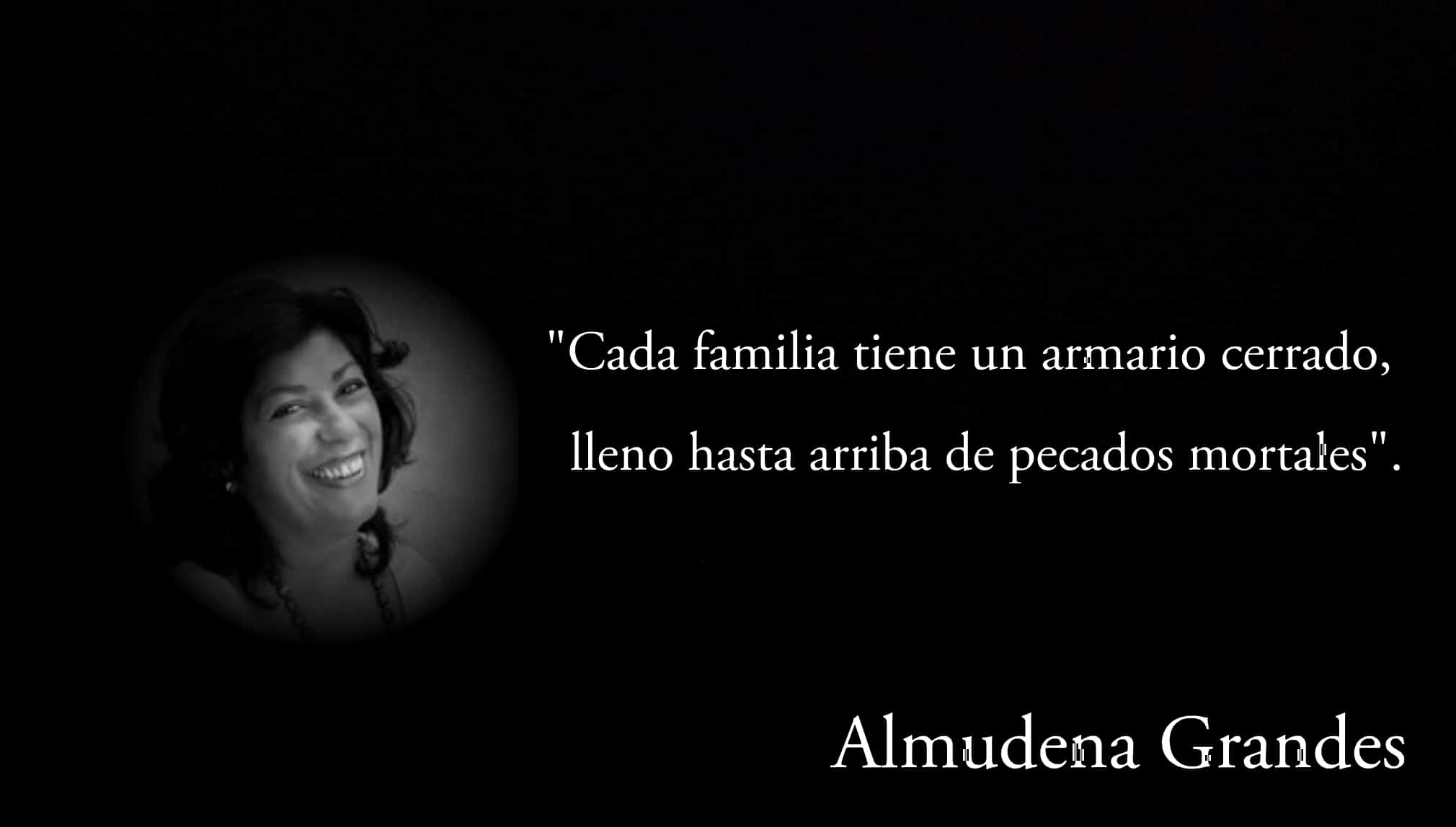
Ines and joy.
Agnes and joy (2010) is the first of the Episodes of an endless war, created by the Spanish writer Almudena Grandes. A saga centered on the "eternal struggle for freedom" that has arisen in postwar Spain until today. The plot line of the series describes the sociopolitical, cultural and mental changes, reflected through three characters belonging to different generations.
En Agnes and joy, the author uses a narrative style with didactic features while reflecting on “ethical or moral dilemmas in the face of otherness”. According to Ingrid Lindström Leo (Mid Sweden University, 2012), Grandes uses these paradigms “to distinguish between good and evil, good and bad”. Consequently, his texts combine real historical events with fictional characters and situations. For its well accomplished narrative and story, this book is among the best of Almudena Grandes.
About the author, Almudena Grandes
Almudena Grandes Hernández was born in Madrid, Spain, on May 7, 1960. Before dedicating himself fully to literature, he graduated from the Faculty of Geography and History at the Complutense University of Madrid. She began her career in letters in 1989 as a copywriter for encyclopedias. Then, over three decades, he has successfully ventured into the genres of narrative, erotic novels, short stories, chronicles and novels. She is an extremely thoughtful woman, his sentences are full of laudable depth.
Your first post, The ages of Lulu (1989) was an editorial success, translated into more than 20 languages. Additionally, Grandes is a journalist and screenwriter; His name is linked to prestigious media such as the newspaper El País or the String SER. Agnes and joy It is the eighth of his thirteen novels published to date, in a list of works that includes seven film adaptations.
Historical and political context of the work
Almudena Grandes was inspired by the invasion of the Arán Valley, Catalonia, for the development of the argument of Agnes and joy. It was a military incursion carried out from France by Spanish communist guerrillas during the fall of 1944. In this book, Grandes unravels three constant themes in his career: the postwar period, the Spanish transition, and his leftist political position.
According to Santos Sanz-Villanueva (El Cultural, 2010), “Grandes transcends the failed military operation until turning it into a category of certain behaviors whose complexity reveals showing the trajectory of some protagonists. This leads him to trace the narrative action back to the Republic and to reach current affairs through individual notes ”.
Characters (and rapporteurs) of Agnes and joy
Although the war is important, most of the novel revolves around the experiences of the protagonist, Inés. She appears as the main voice - in the first person - in a story that details the journeys of Spanish republican exiles in France. In several segments the narration is carried out by Fernando Garitano (nicknamed Galán), who becomes Inés's husband.
Galán describes —also in the first person— the lifestyle of some real characters of the Spanish Communist Party. Among them, Jesús Monzón Reparaz, Dolores Ibárruri (Pasionaria) and Santiago Carrillo. There is a third narrator: the author herself, who recounts events prior to her own life and presents them with a warm, omniscient and committed intonation.

Big Almudena.
Narrative style
Grandes does not pretend to appear impartial or review the webs of the past without getting emotionally involved.. On the contrary, it reveals data (true and fictitious) as a gossip about the interpersonal relationships of some historical names. Therefore, greater interest is perceived in the love affairs of the protagonists, instead of delving into real events of national and international significance.
Agnes and joy it is a dense and long text, full of detailed descriptions, loquacious verb and accessory stories. These frequent parentheses - in the opinion of critics such as Nick Castior of Revista de Libros (2020) - can produce segments of “incongruous reading”. In any case, Grandes achieves a very clear image of the people of those times, with their respective customs, peculiarities and difficulties.
Structure of the novel
The novel covers a period between 1936 and 1949, although it finally reaches until 1978. Spatial movements take the reader to Madrid, Lérida, Bosost, Toulouse and Viella. The book is divided into four parts: Before, During, After and Five Kilos of donuts, which group thirteen chapters in total. However, the linear pattern is not permanent, as many analepses, ellipsis, and prolepsis appear.
Most of the pages pass between anecdotes corresponding to the protagonist's period in Toulouse. For the more conservative literary analysts, it represents a characteristic contrary to the traditional historical novel. Likewise, the omniscient narrator's speech is recreated in sentimental focalizations that highlight love as the mobilizing factor of the whole story.
Summary of Agnes and joy
“That same night, he wrote a letter, a week later, he received another, and the next morning he came to tell me that everything was settled. It had not cost him any work to convince a friend of his people, very smart, to go to an oil mill to buy oil at a Fuensanteño price, and then find a way to send it to Madrid, from where another friend of his, just as well off that he, and an employee in a transport company, would send it to us as soon as he found a hole in a truck ».
The start in Madrid
A 20-year-old girl, Inés Ruiz Maldonado, recounts from her monarchical sympathizing perspective how the civil war begins to change her life forever. She is alone with Virtudes' personal assistant in Madrid because her family moves to San Sebastián for medical reasons. In addition, his older brother, Ricardo, has been a member of the Falange for two years and is enlisting in the Armed Forces.
Thanks to the Virtudes assistant, Inés meets Pedro Palacios, head of a Unified Socialist Youth (JSU) cell. Pedro falls in love with Inés and convinces her to establish a Red Help headquarters in his house. For this reason, she uses the password given by Ricardo to enter the safe and dispose of the family savings.
A country torn from the heart
In reality, Ricardo planned to allocate the money protected to contribute financially to the National Uprising. So, the once close brothers become mortal enemies. The division of the family bosom symbolizes the crudest consequence of the war: “Cainism”. However, after the death of mother Ricardo, he is forced to watch over his little sister due to a promise made to his mother.
Ricardo solves his existential paradox by handing over his sister to the care of his wife, Adela. But, after Pedro Palacios' betrayal of Inés and Virtudes, both are imprisoned in Ventas and sentenced to death. Just the intervention in extremis Ricardo saves Ines from the wall; Virtues does not have the same luck. At the end of the war, Inés is admitted to the country convent run by her sister-in-law Adela.
The escape
But the days in the convent begin to become unbearable due to a friend of Ricardo's, Commander Garrido. The Falangist sexually harasses Inés for her republican position. Thus, When Inés hears on the radio about the Republican invasion of the Arán Valley, she decides to escape. The raid came from France, occurred between October 19 and 27, 1944.
Despite the fact that Franco's defense system repelled the rebel offensive, most of the subversives returned unharmed to France.. At that point, Galán bursts in as a narrator during the preparations for the so-called “Operation Reconquest of Spain32”. Then, Inés continues the story from the guerrilla enclave of Bosost, where she is incorporated as a cook for the republican troops.

Quote by the writer Almudena Grandes.
Toulouse
Inés becomes an exceptional cook, to such an extent that she manages to found an excellent restaurant in Toulouse. Inés and Galán (Fernando Gaitano) fall in love, get married and have four children. From that moment on, Inés dedicated herself to supporting her family (and helping other comrades in the struggle) sustained by the success of her establishment.
Meanwhile, Galán clandestinely returns to Spain for long periods to meet his fellow Communists. Fernando's work focuses on collecting and transmitting information about the situation within the country. In Toulouse, Inés's house serves as a meeting place for real characters in history, among them, Dolores Ibárruri (Pasionaria) and Santiago Carrillo.
Five kilos of donuts
Inés' circle is completed where it all began, in Madrid, together with her husband and his co-religionists. Franco's death in 1975 gave way to the return of freedom and democracy in Spain. The protagonists celebrate by eating one of Inés's specialties: donuts.
It represents a closing with certain melancholy tones mixed with the feeling of joy at the end of the dictatorship. The final sequence of the book evokes the arrival on horseback of Inés to the Bosost camp in 1944. At that moment, she was loaded with five kilos of donuts inside a hat box ... The amount she promised to do when Spain was liberated.